Telling Effective, Memorable Stories With The Journey Curve
Have you ever looked out at an audience, whether of 1,000 or just one key person, and feel like you’ve lost them – but don’t know why? Perhaps, you have had a powerful experience that you feel can help guide your team, or your future, but you don’t know exactly how to share it. Or maybe you’re frustrated because your company story is told by a dozen people in a dozen different ways.
As I launched my speaking career after fourteen years of emerging media creation in 2009, I spoke often about a variety of storytelling structures. I trained leaders at companies like Facebook, LinkedIn, and Google, iterating ideas as I went.
But as my work grew publicly, I held a question privately: Is there one universal framework that could guide a retellable story? Could there be a framework flexible enough to help with keynotes, media, organizational narratives, and life-changing experiences?
Then, about six years ago, as my journey brought me to write a book on storytelling, I committed to following the breadcrumbs of teachers here and long past. I looked at all of the stories I most loved to tell, and the ones that I had helped others to tell.
I asked myself: what is similar about all of these stories? I dove deeper into Joseph Campbell, and drew further insights. But I also felt that the Hero’s Journey, while valuable for myths and movies, had too many steps for a three minute company story, five minute transformative life story, or even a twenty minute speech. In my search I came upon guidance from Pixar, and also key insights from the improv teacher Kenn Adams with his Story Spine, which was introduced to me by my co-founder, the great storyteller Joel ben Izzy. I was significantly aided by a great teaching by Kurt Vonnegut, and eventually I ended up writing a chapter about each of these approaches.
Then one day, as I was doing what I thought was a last edit on my book, I got some feedback from my old friend and collaborator, author and thinker Jonah Sachs. Jonah has created brand storytelling movies that had been seen by tens of millions of people in the pre-YouTube era, and has an innate sense for strategy. His book, Story Wars, was just out, and he had generously read my recent draft.
Over lunch one day, Jonah handed me the manuscript. “I have one main piece of feedback for you,” he said. Oh great, I thought. Just one!
“You have to take all of these ideas and make them one.”
Time stopped for a moment. “But I’m almost done, Jonah. I’m heading to design next week.”
He looked at me and gave one of those classic Jonah Sachs shrugs. “I’m not sure you are.”
I gave some further feeble resistance. But I knew he was right.
There’s nothing quite like thinking you are done with a book and realizing you have to dive in yet again. I was already four years in…what was yet another round? So I went back to the drawing board, and worked to layer these ideas together and came up with an approach. Mapping dozens of stories again, I tested it again and again. As Jonah had predicted, I began to find an immense amount of versatility in one simple shape.


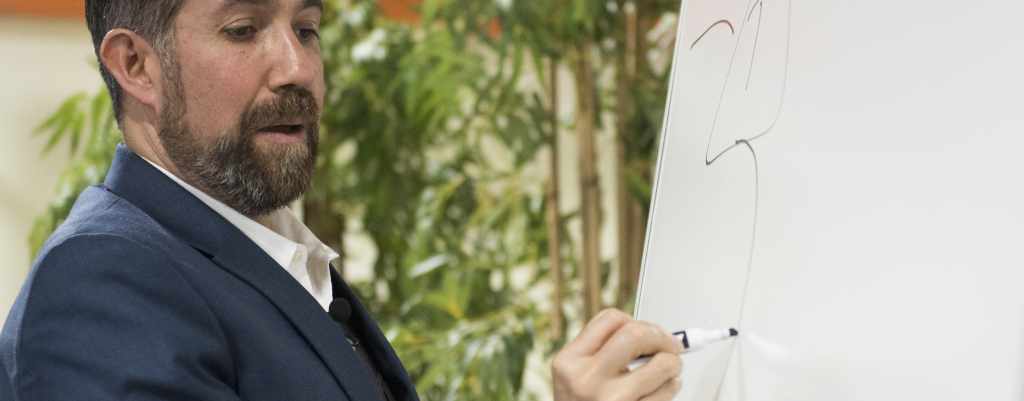
This lunchtime challenge led me to the storytelling framework I work with now, which I’ve taught to thousands of leaders around the world. I’ve used it to help founders, CEOs, recruiters, CMOs, Executive Directors, and many entrepreneurs to see the insights and transformations in their lives as powerful fodder for authentic speaking, focused brands, and more aligned organizations. The approach is called the Journey Curve.
I’ve been sharing this in my speeches and trainings, and in my book, but this is the first time I’m sharing it online.
Here’s how it works. Today, your audience will take in 100,000 words, and about 34 new gigabytes of data – from that tiny glance of an email, to a radio ad on the way to work, to the color of that shirt they chose not to wear, to the banner ad they think they ignored, to what time they need to meet their cousin for dinner.
Data, data, data. They. Are. Overwhelmed.
And the story you are telling is competing with all of this.
Tomorrow, your audience will forget nearly everything they took in today. But they will remember a few things. And those few things will be carried by the stories, whether told in ads on or on stage, in person or in video, online or on the train.
These stories will open the mind with suspense, release dopamine and spark curiosity, drop in some cortisol to get your audience to feel a bit of stress and try to guess how it will end. And after the journey has ended, there may even be a bit of oxytocin that creates the connection and an exhale.
They will remember the stories, because well-designed stories anchor in memory. They carry values, they build culture, and they drive action.
And let’s be clear about what we mean by story. To be retellable, it’s essential to get our terms right, to zero in on this word that means so many things to so many people. To some it means our brand or our messaging. To some it might mean what happened yesterday, our pitch, or what I do. That’s where retellable became a helpful container for me, a smaller circle in the big world of story.
A retellable story is not a message or a pitch. A retellable story is a journey that takes us along the road, through twists and turns, and delivers an insight or critical change. It shows how the world was, and how it is now. As Pixar director Andrew Stanton says, a story’s job is to ‘make you care.’
And to get them to care, you have to be the guide, not by skipping quickly to the facts, but by delivering a valuable gift to the audience. Some surprise, or lesson, or change in how the world works.
In fact, there are three key changes in a retellable story. If you remember these, you’ll remember a framework that will inform any of your future stories: Then one day, until finally and ever since then.
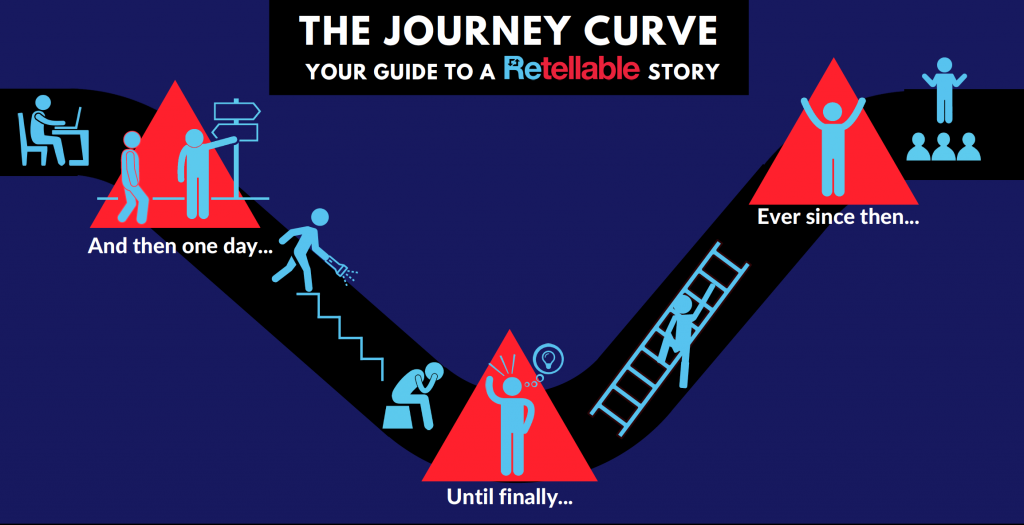
Remember these pivots, and your story will be memorable. Better yet, you’ll know where you’re going without having to memorize each word, and sound like a robot if you miss one single word of your script. And take the opportunity to pause at each pivot, and allow them to take us to a different place and time.
THEN ONE DAY: It begins with how the world was – or once upon a time. Or about 5 years ago. This is to set the scene, to draw your audience into a different place and time. This sets you up for a change that sends you on your journey – your then one day.
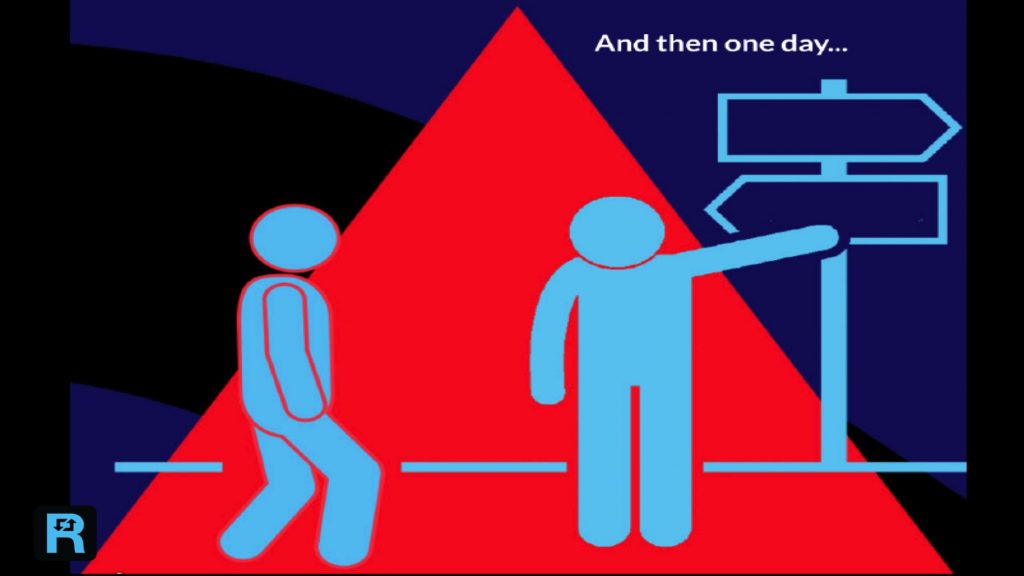
Then one day is your first key pivot in the story. Take the opportunity to zoom into a scene, a moment in time revealing a place where something happened. It might be a an insight, a fork in the road, or a meeting that drove you to a change.
Your story works around these changes. Because, remember this: No change, no story.
That first change leads us down into discovery.

Now you zoom out and across time. Because of that, something happened. Because of that, something else happened. And because of that, this happened. This might be where some of your data goes. Where you discovered this bit of information that led to this revelation, which led you to think this…And where one year becomes two or three.
“But they need to hear the facts!” you say.
And that’s great. You can include the facts, as you go on your discovery. Or you can get to the end of the story quick. But you can’t expect your audience to remember it, or to care about what you have to say.
And so, as we drop down into the Curve, we come to the very special place. One that Joseph Campbell found in myths around the world.
The wonderful place of not knowing. The Innermost Cave.
No! You say. I have to be the One Who Knows! The expert!
Maybe you do. But better to be the One Who Shows. Who shows a different future is possible. That change is possible. That healing is possible.
And to get there, you have to go through the gully. Because, my friend, that is where the power is. Even just a moment of being lost, or vulnerable. Not knowing! This sparks a depth of connection with the audience, revealing connection. Critical, especially, for experts and leaders in order to show how we are similar. The Cave reveals the mystery that eventually catalyzes transformation.

Classically, you know that if there is a serpent, or it’s very dark, it’s the Innermost Cave. At this point, we don’t know what’s going to happen. How we get through?
It might last 30 days. It might last 5 seconds. But then, something happens. A mentor tells you something. Or you realize something that you didn’t know was relevant until now.
But you can’t force your way out. Might alone will not do. This is the culmination of discovery, of the down-going, as Nietzsche said.
This is where the change happens, and the story becomes memorable.
Now comes the key pivot. You’ve drawn your audience down into the place of suspense of curiosity, not for your own goals, but because it’s a way of drawing your audience deeper, and making them care. This is the moment when you can hear a pin drop. In your story, if you’ve led them along with the confidence that comes with knowing where you are going, the riveted audience is in the palm of your hand. They are paying close attention.
UNTIL FINALLY: Suddenly, you see the light. You exhale. You find air. The Innermost Cave goes to the until finally moment. Whether it’s an insight, a subtle change, or a lesson, and whether it’s yours, your customer’s or your friend’s, something gets you out of the cave. Whew.
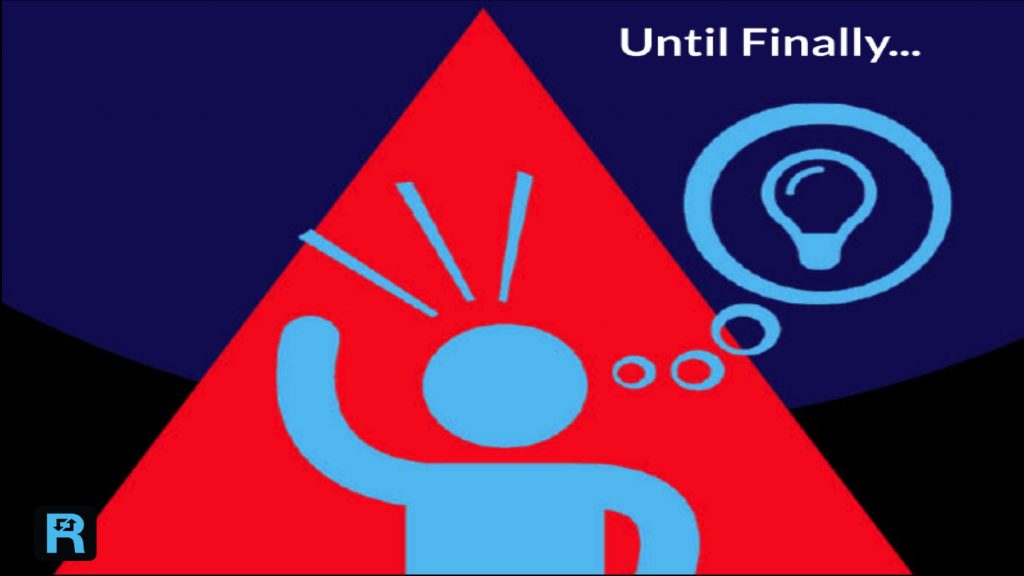
The until finally moment is where your key message may live.
Then, you are ready to emerge, and climb the ladder out. We’re not done, but the wind is at our back. We have momentum. Because of that, this happened, we did this. We did that.
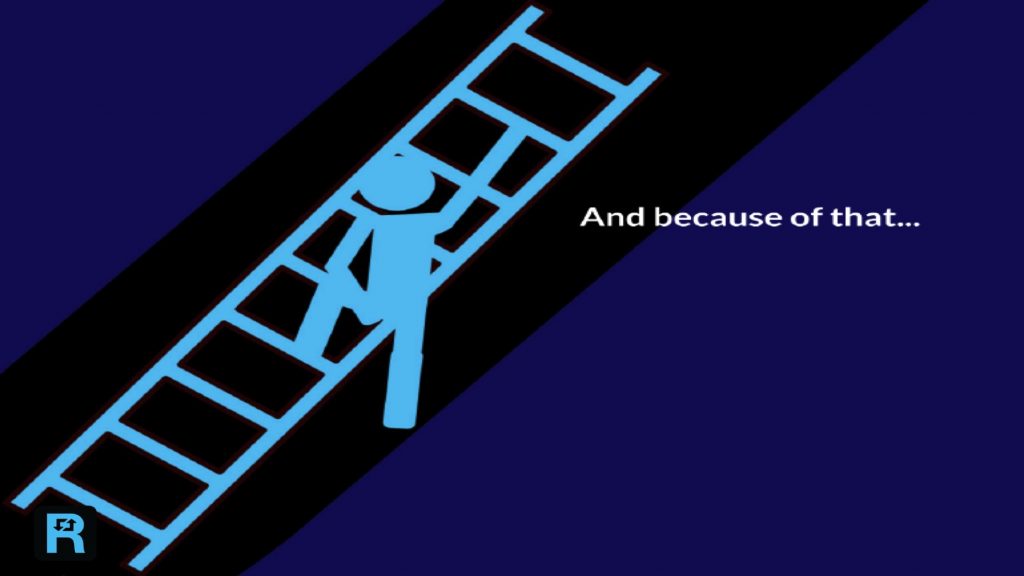
This is where your approach may come up. I/we realized that if we did this, and then this, in this kind of circumstance, I/we could be successful.
EVER SINCE THEN: And we get to the final pivot, the one that anchors the change, and makes it last. This is where you show what is different now. Why this story matters, to you and to the audience. You tie it all together to your message. You reveal your lesson. You show what is different now.
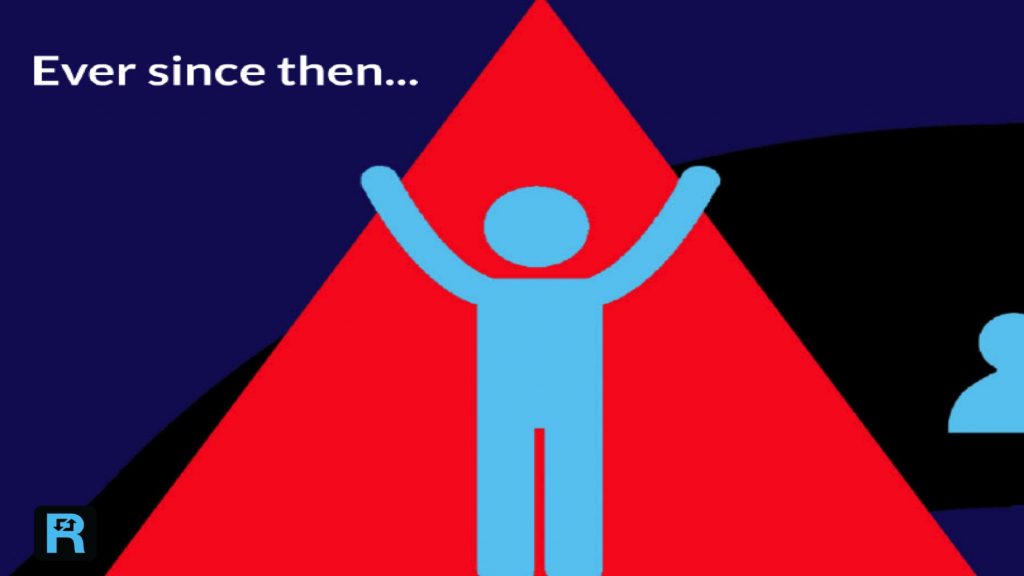
Ever since then, you’ve seen your work differently. Ever since then, you’ve been committed every day to deliver on your purpose, to bring your vision to life, to make this idea a reality.
Note for speech writing: In a speech, you might only tell a story to introduce the speech, ending with a journey that led you on a discovery. This is where you introduce the why of your presentation, and draw in the attention of your audience. Then you can reveal what journey this has sent you on, and what you have discovered since then. The innermost cave might then be the place where you wonder how all of these pieces will come together. The until finally then reveals the what of your presentation. The key message, the essence of what you have discovered. The ladder up is where you reveal your approach. You might talk about how things work. (So the then one day is your why. Your until finally reveals your what, what is vitally important to you…and the ladder out is your how – how you’re going to do it.)
There are so many methods to shaping a story. But I’ve found if you can remember the Journey Curve, and these three pivots, it will help you know where you are in your story, where you are going, and what is missing.
And you might just find, as I and my clients have, that a frame for retellable story is the gift that keeps giving.
-Jay Golden